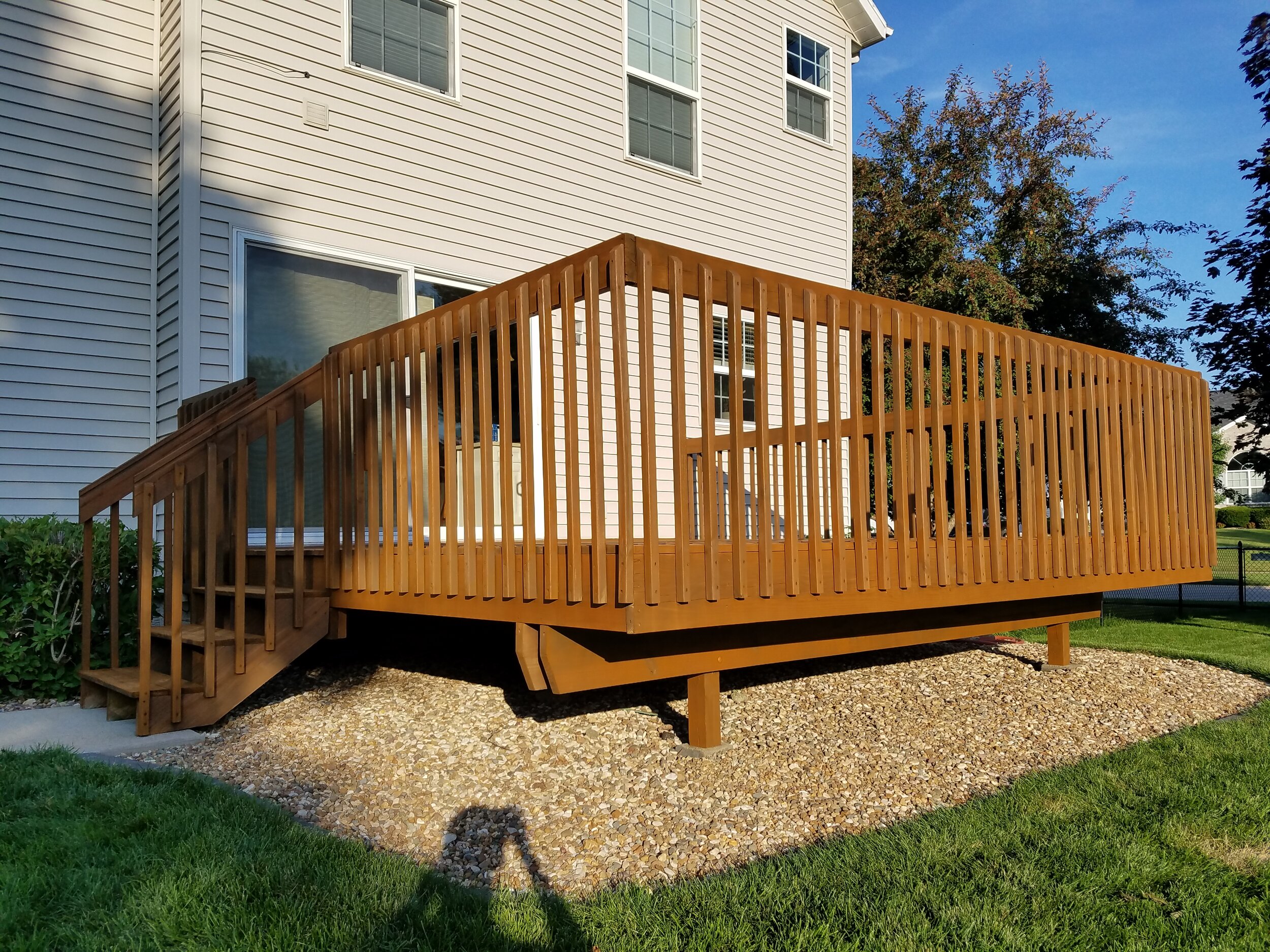How to Select a Stain Opacity
We know how important decks are to your home. Usually, decks are the premiere outdoor space for social gatherings such as cookouts or relaxing outside after a long day of work. With this, it is very important that you deck looks as stunning as it can be.
Right alongside selecting which color you’d like to use on your deck is selecting which opacity to use. Clear, Toner, Semi-Transparent, Semi-Solid, Solid… it can be a bit overwhelming! Luckily, we’re here to break it down as simply as possible for you to aid in your decision. For reference in this post, a “thin” stain refers to a Sealant, Toner, or Semi-Transparent which are generally oil-based and show the natural wood grain. Semi-solid and solid stains are heavier, usually latex-based, and referred to as “thicker” stains. If you haven’t read our article about oil vs. latex-based stains, check it out here!
In general, the newer the deck the thinner the stain you should use. Thin stains will retain the natural look of the wood, as many new homeowners desire. Each time the deck is re-coated, the wood will retain an amount of the old stain, due to the oil-based properties of the stain allowing it to soak into the wood. Then, as the deck ages and retain more stain from previous coatings, it is time to work down this list into the heavier, more durable (but less natural) stains that will not be impacted by leftover stain.
If you prefer to read about each opacity individually, below is an in-depth explanation of each stain opacity followed by the quick takeaways in bullet point form. At the top is the thinnest stain with no added color and further down are the heavier options with more pigment.
Sealant
A sealant is 100% transparent with no color added, and simply waterproofs the wood. If you recently built a new deck and don’t want any color added to it, but still want to preserve it, this is the route to take. The only indication of wear with a sealant is that water will no longer “bead” on the deck, similar to a waxed car.
Used on new or unstained decks
No color added
Oil-based
Waterproofs wood from the inside
Toner/Advanced Penetrating Oil
Toners are simply sealants with a hint of color added to enrich the natural tone of the wood. Toners are also most commonly used on near-new wood or decks that haven’t been stained before. Any flaws in the wood will be visible under a toner/advanced penetrating oil, so they are best used on newer decks.
Used on newer or unstained decks
Slight hint of color
Oil-based
Doesn’t cover flaws in the wood
Fades away over time
Semi-transparent
Semi-transparent stains enrich the wood’s natural grain while adding more color. If you choose a semi-transparent and don't like it, you do have the option of switching to a solid stain (of any color) in the future. Semi-transparent stains (in addition to the two stains mentioned previously) will simply fade over time, as opposed to peeling or chipping like a solid stain. Any flaws in the wood will be visible under a semi-transparent stain, so it is also best used on newer decks.
Most common “natural finish”
Can be used after a toner has faded
Oil-based
Fades away over time
Semi-Solid
Semi-solids are by far used the least often of any other opacity, but are still worth mentioning. This option is similar to a semi-transparent stain in that it allows some wood grain to show through (less so than a semi-transparent) but is slightly heavier like a solid stain. This allows for increased longevity/durability while further concealing any flaws in the wood. Like a semi-transparent stain, you can switch to any color of solid stain in the future if you don't like the semi-solid but cannot switch to a semi-transparent or thinner stain, as semi-solids are generally latex-based. Lastly, despite semi-solids being latex-based, they do still show a small amount of wood grain, so changing colors can be possible on occasion, but is very rare.
Rarely used
Shows so little wood grain that most homeowners opt for solid stain for increased durability
Latex-based
Cannot switch to an oil-based stain after semi-solid
Technically it can be stripped off, but is so expensive and time-consuming that I very rarely recommend this path
Solid
This option is similar to paint (Note: NEVER use exterior paint on your deck. Read our post here to learn why) in that it's opaque and thus doesn't show any wood grain. Since it is much thicker than the previous stains, it does last the longest of all other options. Unlike sealants, penetrating oils, and semi-transparent stains which soak into the wood, a solid stain is latex-based and will bond with itself on top of the surface. This allows it to completely cover any previous stain jobs while minimizing the risk of premature peeling. If you choose a solid stain and don't like it, you do not have the option of switching to any other transparency, but you can change color of solid stain. Solid stains are most often used when a homeowner is looking for maximum longevity, or to cover up previous stain jobs.
Most commonly used to change color of a previously stained deck
Latex-base
Most durable/longest lasting
Cannot switch to oil-based after a solid stain
Technically it can be stripped off, but is so expensive and time-consuming that I very rarely recommend this path
If you’d like to read more about stain opacities, this article by GNH Lumber as well as this one by Sharper Impressions Painting Co. do a great job further explaining the subject.
I hope this article has been helpful to you! As always, feel free to reach out to me at brendan@McCormickPaintingServices.com or 563-506-5510 and I’d be happy to further explain anything. If you’re looking for painters to hire for your next project in Cedar Rapids or surrounding areas, give us a call!




